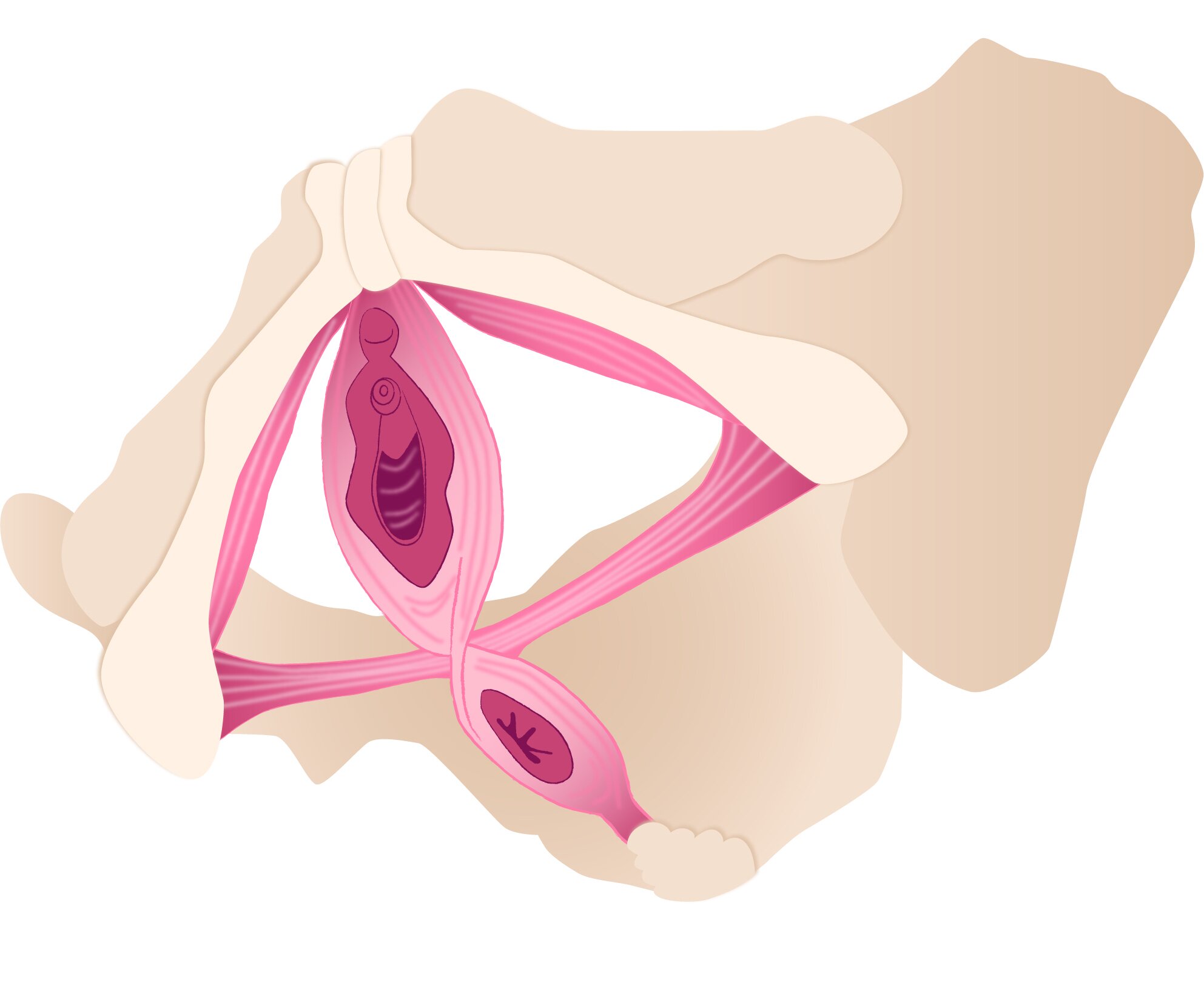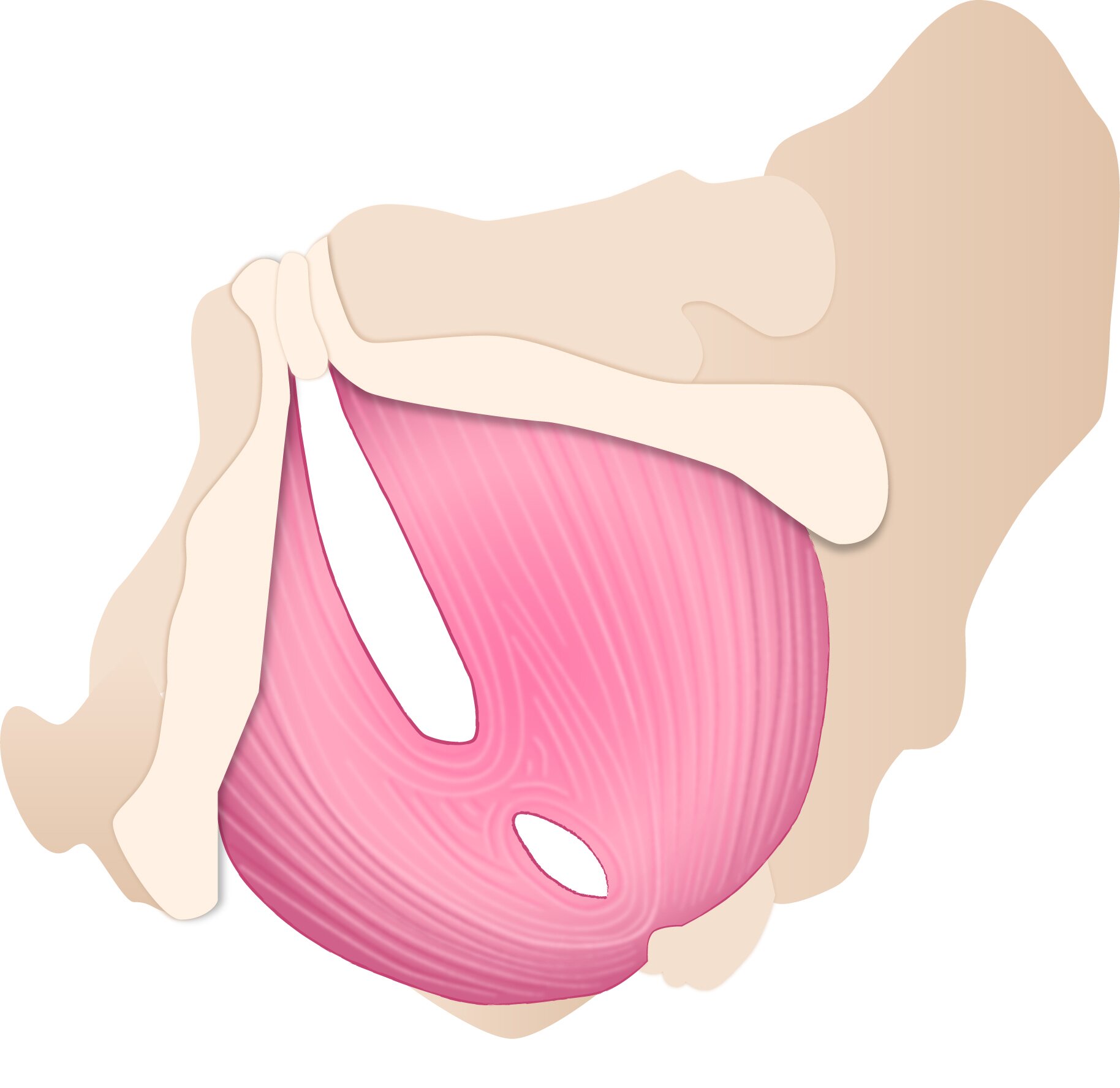THE COCO BERLIN METHOD
The pelvic floor is the most misunderstood and neglected area of our body, and yet this group of muscles plays an important role for our physical health, emotional wellbeing and sexuality. Pelvic floor health affects every area of a woman's life.
The pelvic floor muscles of most women are underutilized and weak or too tense — often both at the same time. Unfortunately, women are uninformed about the importance of their pelvic floor health and only start paying attention to their pelvic area when they encounter pelvic floor issues like pelvic pain, incontinence or sexual dysfunction. But the pelvic floor is too important to be neglected.
The good news is: you don't need to do boring and time-consuming exercises to increase the strength of your pelvic floor: the Pelvic Floor Integration™ method is based on the newest scientific findings. It's highly effective — and it's fun! It's like visiting your own body for a spa.
PELVIC FLOOR INTEGRATION™
The unique Pelvic Floor Integration method is based on Coco Berlin’s extensive education, research, and work with women since 2006. The method incorporates newest scientific findings in medicine, especially regarding the pelvic floor, fascia, biomechanics and somatic psychotherapy. Berlin stands on the shoulders of giants like Eugene Gendlin, Eric Franklin, Benita Cantieni, Moshé Feldenkrais, Marcel Caufriez as well as Middle Eastern, Taoist and Yogic Traditions, and she never stops learning. Thankfully, research in areas that affects women’s health and wellness so thoroughly has gained momentum in recent years.
Pelvic floor muscle layers © Coco Berlin's book Pussy Yoga by Komplett Media
A NEW BODY AWARENESS
Pelvic Floor Integration starts by deepening your mind-body connection. Without refined proprioception, it is not possible to sense and therefore train and relax the pelvic floor in its entirety. Most women have a blind spot in their pelvis and there are a lot of misconceptions about what the pelvic floor actually is – and we can not possibly train what we can not perceive in our body.
With Pelvic Floor Integration, we focus on bringing the structures of the pelvis into your awareness. From this heightened perception, you learn to activate, train, and relax the right muscles separately.
BENEFITS OF THE SENSUOUS APPROACH
The sensuous component of the exercises combines mindfulness and somatic movement with Ideokinesis and helps your nervous system to make new connections. This rewiring promotes an actualization of your self-image and can rid you of old, limiting habits in the way you move, think, and feel.
Through sensory awareness, Pelvic Floor Integration brings you into the present moment and helps you calm your nervous system and deeply relax while you exercise. Most of the exercises can be implemented easily into your daily life, where they not only train your pelvic floor but also help you to purposefully relax, re-energize and stay connected to yourself throughout the busiest of days.
The bony structure of the female pelvis © Coco Berlin's book Pussy Yoga by Komplett Media
PELVIC FLOOR INTEGRATION FOR BODY, MIND, AND SOUL
Pelvic Floor Integration is an integrative system which effects the body, mind, and soul. It trains the pelvic muscles holistically and dynamically to keep it fit and naturally integrated as the center of your musculoskeletal system. Your vagina becomes fit, long, lean, strong, and sensitive in a powerful way. In addition, all your female organs and bladder are naturally lifted. The exercises help your vagina with sexual function, provide good blood circulation and a better neural connection to the brain — essential for sexual sensation and fulfilling orgasms.
“Research shows that women who enjoy a fulfilled orgasmic sexuality live a more fulfilling life.”
They express their creativity, are more decisive, and have more drive to achieve their goals. They are less likely to be manipulated, and they also have a greater capacity for compassion and love. But Pelvic Floor Integration can do much more than that.
It actively integrates your pelvic floor into your natural movement, as it has been optimized by evolution. And that's not just a much better approach for your love life, but for everything else too. Our whole body becomes naturally aligned, our posture straightens from the inside and our movements become more efficient and graceful. You'll notice it right away in sports, shopping sprees, extended museum visits, effortless stair climbing, and at your desk at work.
Studies show that a well-trained pelvic floor leads to greater psychological health and stress resilience. People with a strong pelvic floor have less anxiety, a greater ability to master difficult life situations and deal with traumatic experiences. Depression is also associated with pelvic floor disorders.
Try this quick Pelvic Floor Integration exercise:
Strengthen your pelvic floor with this relaxing exercise. It’s easy and fun!
Why Kegel exercises have few benefits for pelvic floor therapy
While Kegel exercises work on the muscles directly surrounding your vagina, proper pelvic floor exercises should strengthen all layers of your pelvic floor muscles and integrate them into a functional core with your abdominal muscles, back muscles, the diaphragm and also effectively connect to your musculoskeletal system. Furthermore, it's critical to not only look at the system of muscles of the pelvic floor, but also the connective tissue and the pelvic viscera, the organs in your pelvic cavity.
Your vagina itself is an involuntary smooth muscle, not a striated muscle that can be activated consciously. Exercises in which you squeeze or move objects in your vagina do not directly train your vagina, but only the muscles in the immediate vicinity of the vagina. Those muscles are especially the first layer of the pelvic floor (including the sphincters) and the PC muscle, which is just a small part of the levator ani, the important third layer of the pelvic floor.
Pelvic Floor Integration™ exercises © Coco Berlin's Pussy Yoga by Komplett Media
This is why all exercises, in which you activate your vagina, exercise only a fraction of your powerful pelvic floor complex. Therefore, it's misleading to call training with weights a pelvic floor training. On the one hand, this may lead women to think that what they are doing is sufficient pelvic floor training while they leave their pelvic floor underused, and on the other hand, weight training may also lead to vaginismus, vaginal spasms, bladder problems, and painful sex.
Pelvic floor training that shortens the pelvic floor muscles — which is always the case when we focus on the vagina, even when we relax “her” in-between — can force the bones of the pelvis into a rigid and unnaturally close position. This may cause the powerful third layer of the pelvic floor to sag, so it can't span in its optimal position and do its actual job. Any pelvic floor workout that works exclusively with contraction and without dynamic movement and stretching of the pelvic floor can be counterproductive or harmful.
The main causes of pelvic floor disorders
The most common causes for pelvic floor dysfunction are vaginal births and weakening of muscles and tissue due to aging and hormonal changes with menopause.
Risk factors are also high impact exercise or heavy lifting, even in young women. The rate of pelvic floor disorders is very high in professional athletes, gymnasts are at greater risk. Integrative pelvic floor training, really knowing the system of muscles and training with this embodied knowledge, can help prevent these issues.
Main types of pelvic floor disorders
The most common pelvic floor problems are incontinence (urinary incontinence and fecal incontinence), pelvic organ prolapse (uterine prolapse, bladder prolapse, rectal prolapse) and sexual dysfunction. But the pelvic floor does not only impede how our pelvic organs function, these layers of muscle play a greater role in our overall health. Pelvic floor weakness or damage means also an increased risk for postural issues, lower back pain, pelvic pain, and as shown above it's also linked to depression and anxiety.
But it's not only about building muscle strength if you have weak pelvic floor muscles. Most women with a weak pelvic floor also have a tight pelvic floor, this does not only show in muscle spasms, even subtle muscle tone imbalances can already create a lot of functional difficulties.
DO YOU HAVE A pelvic floor disorder?
Various studies show that one in 3 women will experience pelvic floor problems at a point in her life, the unreported number may be way higher as there is so much shame around this vital part of our bodies.
See if any of this applies to you:
Do you ever leak when you exercise, cough, sneeze, laugh, or rush to the toilet?
Do you ever feel a bulge or a pressure in your vagina?
Do you have any issues with your bowel function?
Do you experience pelvic pain or painful sex?
If you answer any of these questions with yes, do not worry, you are not alone. There is help and a lot of options to restore your pelvic health and quality of life. The earlier you address the issue, the better.
Pelvic floor disorder treatment options
If you already suffer from issues in the pelvic region, the Pelvic Floor Integration exercises will help you to get a grip on the problem and help you heal from the inside out. But I recommend to also seek medical help. You have only one life and one body, take it to an urogynecologist or a physical therapist that specializes in female pelvic medicine to get a physical exam and have them look at your individual needs. Use the resources that your healthcare provider grants you, but if you are not satisfied, try a women's healthcare physiotherapist or urogynecology specialist of your choosing.
There is a lot that can be done without invasive procedures. Physical therapy can help you to activate and train the right muscles, your continence advisor or physiotherapist can help you locate your pelvic muscles using tools like electrical stimulation. They might fit you a pessary to help with prolapse or incontinence to immediately increase your quality of life while you start building your strong pelvic floor muscles. Explore how far you can get with their help, the Pelvic Floor Integration method and lifestyle changes.
If you have pelvic floor problems and live in the USA, you can also find a directory for physical therapists that specialize in women’s pelvic floor health here. If you are in Germany, you find physiotherapists specializing in pelvic floor care here. It makes sense to go to these specialists, as normal physiotherapists don’t receive enough training for the female pelvic floor. The urogynecology field is also constantly evolving, giving women more options, so it is best to go to someone who stays up to date with continuing education.
While you get professional help, Pelvic Floor Integration is your tool to reconnect to your pelvis and start your healing journey empowered, from within.
Much love!
And see you hopefully in one of my programs!
Coco
Products based on Pelvic Floor Integration™
GET THE BESTSELLING BOOK PUSSY YOGA
JOIN OUR TEACHER TRAINING PROGRAM
JOIN OUR ESSENCE ONLINE MEMBERSHIP
GET THE SENSUOUS DANCE WORKOUT
As seen on:























